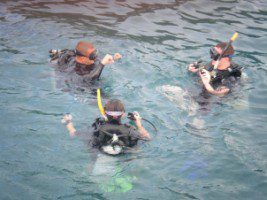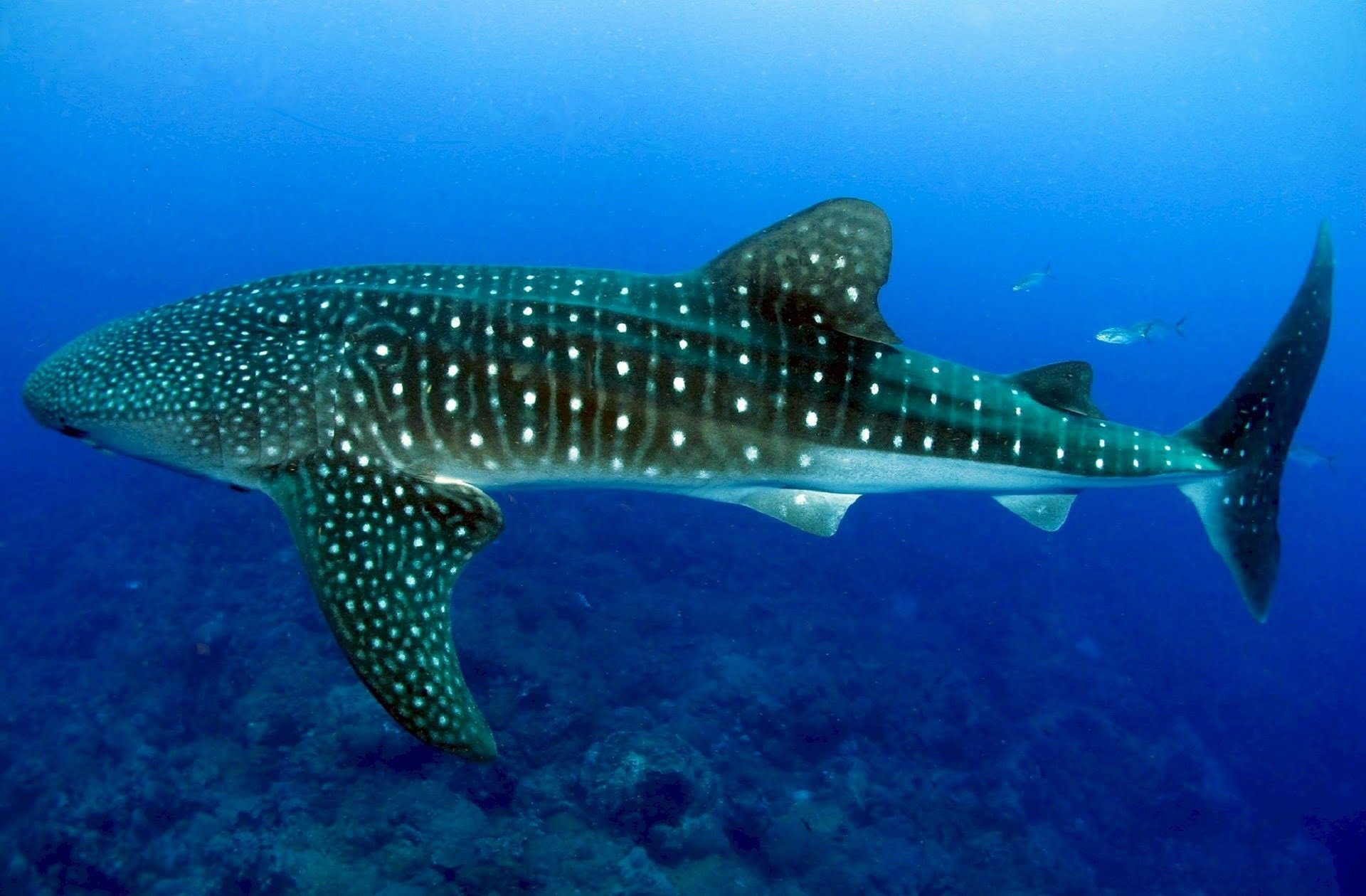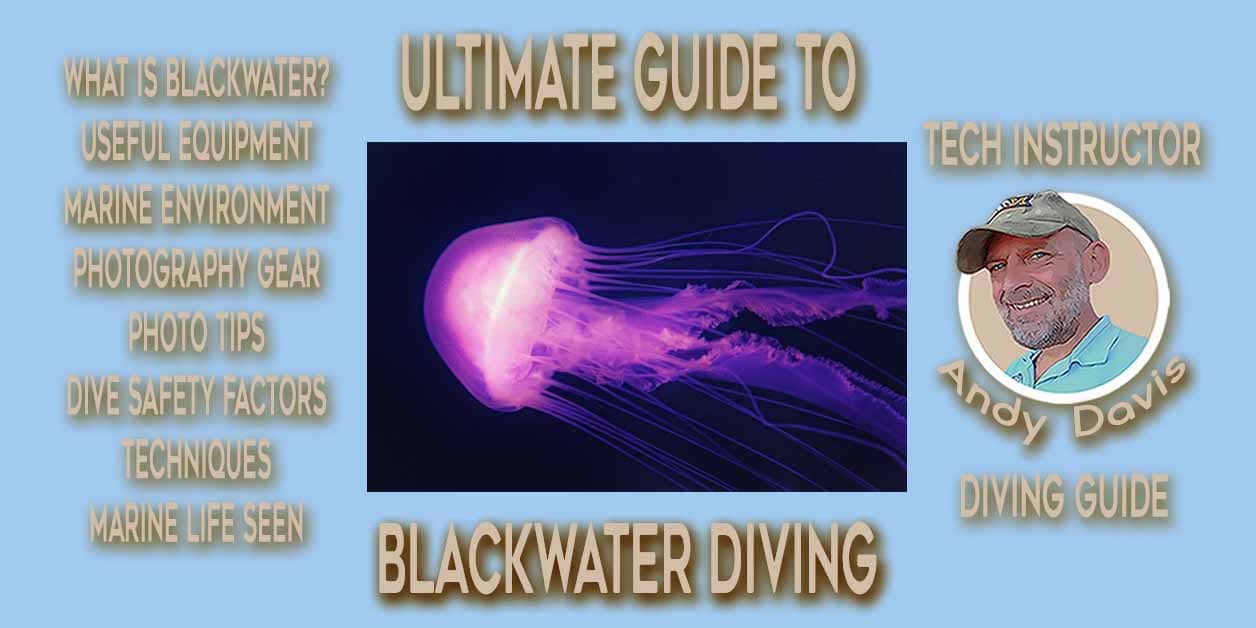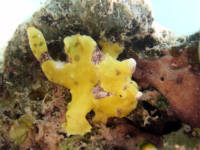UNESCO Marine World Heritage Sites That You Can Scuba Dive!
As passionate divers, we are all drawn to the beauty and mystery of the underwater world. But as we explore the depths, we must also remember our responsibility to protect the marine environment. That’s why UNESCO Marine World Heritage sites hold a special place in the hearts of divers who care about conservation. These sites are recognized for their exceptional value to humanity and are protected to preserve their unique ecosystems for future generations.
From the colorful coral reefs of the Belize Barrier Reef Reserve System to the magnificent Great Barrier Reef of Australia, these 29 UNESCO Marine World Heritage sites offer a bucket list of diving adventures that are both awe-inspiring and sustainable.
What are UNESCO Marine World Heritage Sites and how are they selected?
The United Nations Educational, Scientific and Cultural Organization (UNESCO) has identified 10 criteria for identifying and selecting natural and cultural heritage sites for the World Heritage List. These criteria range from exhibiting exceptional natural beauty and geological features to representing important stages in human history and cultural evolution.
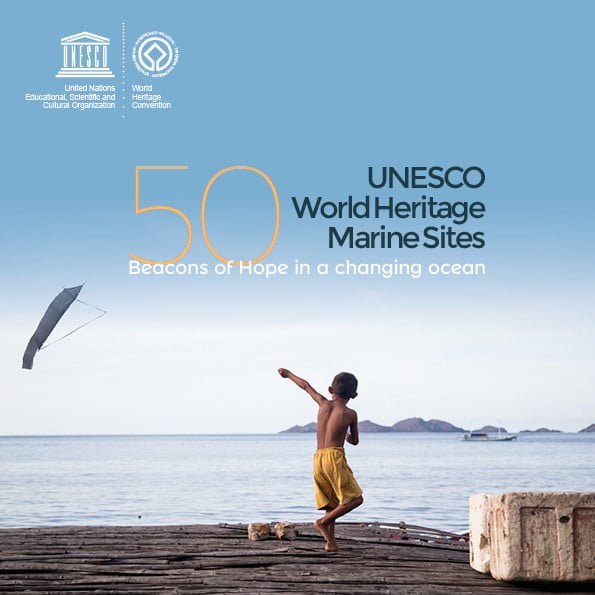
UNESCO Marine World Heritage Sites are a subset of the larger World Heritage List, specifically recognizing sites with exceptional natural or cultural value related to marine ecosystems. Such sites are protected for their importance to humanity and conservation efforts. Marine World Heritage Sites are found in all corners of the globe and include iconic locations such as the Great Barrier Reef in Australia, the Galapagos Islands in Ecuador, and the Wadden Sea in the Netherlands, just to name a few.
The 10 criteria used by UNESCO for identifying and selecting natural and cultural world heritage sites are:
- Representing a masterpiece of human creative genius;
- Exhibiting an important interchange of human values, over a span of time or within a cultural area of the world, on developments in architecture or technology, monumental arts, town-planning, or landscape design;
- Bearing a unique or at least exceptional testimony to a cultural tradition or to a civilization that is living or which has disappeared;
- Being an outstanding example of a type of building, architectural or technological ensemble, or landscape that illustrates a significant stage(s) in human history;
- Being an outstanding example of a traditional human settlement, land use, or sea use which is representative of a culture (or cultures), or human interaction with the environment especially when it has become vulnerable under the impact of irreversible change;
- Being directly or tangibly associated with events or living traditions, with ideas, or with beliefs, with artistic and literary works of outstanding universal significance;
- Containing superlative natural phenomena or areas of exceptional natural beauty and aesthetic importance;
- Representing major stages of earth’s history, including the record of life, significant ongoing geological processes in the development of landforms, or significant geomorphic or physiographic features;
- Being an outstanding example representing major stages of earth’s history, including the record of life, significant ongoing geological processes in the development of landforms, or significant geomorphic or physiographic features;
- Containing the most important and significant natural habitats for in-situ conservation of biological diversity, including those containing threatened species of outstanding universal value from the point of view of science or conservation.
UNESCO Marine World Heritage Sites not only offer unparalleled beauty and unique ecosystems for divers and marine enthusiasts, but they also serve as a reminder of the importance of conservation and sustainability. These sites highlight the need to preserve our planet’s marine resources and safeguard the habitats of countless marine species. As divers and advocates for marine conservation, we must continue to support the protection and preservation of these invaluable sites for future generations to appreciate and enjoy.

1. BELIZE BARRIER REEF, Belize
Belize’s Barrier Reef Reserve System is a true diver’s paradise, a natural wonder that boasts the largest coral reef system in the northern hemisphere. Designated as a UNESCO Marine World Heritage site for its remarkable value to humanity and marine species, it is a breathtaking tapestry of vibrant marine life that will leave you spellbound.
Picture a majestic underwater wonderland, awash with an incredible array of tropical fish and graceful sea turtles, their movements in perfect harmony with the turquoise waters that surround them. And the visibility? Simply stunning, providing divers with the perfect opportunity to witness the reef’s vibrant ecosystem in all its glory.
But for those seeking a true thrill, there’s nothing quite like the Blue Hole. This awe-inspiring natural sinkhole is a staggering 108 meters (354 feet) deep, fringed with stunning stalactites, and teeming with a variety of sharks, including Caribbean reef sharks, nurse sharks, hammerheads, bull sharks, and black tip sharks. This is truly a bucket-list experience that you won’t want to miss.
To reach the Belize Barrier Reef Reserve System, you can take a flight to Belize City before embarking on a journey to the charming coastal town of Placencia or the picturesque Ambergris Caye. Once you arrive, simply stroll along the shoreline to find one of the many reputable dive centers and book a day trip to explore the diverse marine life of Belize’s reef system.
Keep in mind that the Blue Hole is a highly sought-after destination, so it’s best to book your tours one or two days in advance to avoid disappointment.
2. GREAT BARRIER REEF, Australia
Australia’s Great Barrier Reef, situated off the coast of Queensland, is an unparalleled dive destination that has captivated the hearts of divers worldwide. And it’s not hard to see why. With its vibrant corals and an endless array of colorful fish, coupled with crystal-clear waters and warm temperatures, the Great Barrier Reef offers the ultimate diving experience.
Stretching over 2,300 kilometers, this UNESCO Marine World Heritage Site is home to thousands of species of marine life, including sharks, turtles, rays, and an abundance of colorful fish that will leave you in awe. But that’s not all – the Great Barrier Reef is also a treasure trove of maritime history, with numerous shipwrecks scattered throughout the area, each one teeming with its own unique blend of marine species.
For those seeking a deeper connection with this incredible ecosystem, there are opportunities to contribute to marine conservation efforts. Several organizations offer volunteer programs where divers can participate in activities such as coral planting and monitoring, helping to safeguard the future of this remarkable natural treasure.
Getting to the Great Barrier Reef is a breeze, with a variety of transportation options available. Cairns serves as the main gateway to the reef, and it is well-connected to major cities in Australia, with frequent domestic flights from Sydney, Melbourne, and Brisbane. Once you arrive, the city is home to an abundance of reputable dive centers that can cater to divers of all skill levels.
For the ultimate immersive experience, consider embarking on a liveaboard diving trip, where you can spend multiple days diving and exploring the reef. These trips typically depart from Cairns and can be booked in advance through various liveaboard operators.
3. TUBBATAHA REEFS NATURAL PARK, Philippines
The Philippines’ Tubbataha Reefs Natural Park is a UNESCO Marine World Heritage Site and a must-visit for any serious diver. With its pristine coral reefs and crystal-clear waters, it’s a paradise for marine life, from schools of colorful fish to graceful sea turtles. Explore the deep underwater coral walls that make Tubbataha famous, and keep an eye out for whales, numerous shark species, dolphins, Napoleon wrasse, and thriving populations of turtles. Overall, marine biology researchers have discovered that Tubbataha supports over 360 species of coral and almost 700 species of fish.
The reef is isolated geographically, so the only option for diving in Tubbataha is a liveaboard trip. Additionally, trips are only available between March and June. The top-rated Tubbataha liveaboards include;
Tubbataha Reefs Natural Park is located in the Sulu Sea in the Philippines. To get there, you can fly from Manila airport into Puerto Princesa to meet your liveaboard.
4. KOMODO NATIONAL PARK, Indonesia
Komodo National Park in Indonesia is a treasure trove of marine biodiversity, with over 1,000 species of fish and 250 species of coral, that well-deserves its UNESCO Marine World Heritage Site status. The highlight of any diving trip here is, of course, the chance to see the majestic manta rays. Share the ocean with sharks, snap some great macro marine life photos, and explore underwater rock formations that create unique and fascinating diving environments. When not diving, take the opportunity for a tour to see the infamous Komodo Dragons. The monsoon season runs between December and February, but this is the best time to see Mantas, as the wet weather creates nutrient-rich waters.
Komodo National Park can be accessed by traveling to Labuan Bajo airport on the island of Flores. Domestic flights are available from Jakarta, Bali (Denpasar), and Lombok. From there, you can book with a local dive center or arrange a liveaboard trip to explore a wider diversity of sites.
Popular Komodo liveaboard options include:
5. COCOS ISLAND NATIONAL PARK, Costa Rica
Located off the coast of Costa Rica, Cocos Island National Park is a remote and unspoiled diving destination that’s perfect for adventure-seeking divers. With its strong currents, surge, deep walls, and pinnacles, it’s not for the faint of heart, but experienced divers will be rewarded with breathtaking sightings of schooling hammerheads, white tip and silky sharks, manta, and marble rays. The best time to dive at Cocos Island is the wet season, between June and December when upselling nutrient clouds attract pelagic visitors like manta rays and whale sharks
To reach the UNESCO Marine World Heritage Site at Cocos Island National Park, you can take a liveaboard dive boat from the mainland, which typically takes around 36 hours.
GALAPAGOS ISLANDS, Ecuador
The Galapagos Islands are famous for their incredible biodiversity, both on land and in the sea. Diving here is an unforgettable experience, with encounters with marine giants like whale sharks, manta rays, and schools of hammerhead sharks. The underwater landscape is equally impressive, with deep canyons and volcanic formations that create unique diving environments.
Whilst there are shore-based diver operators on Galapagos, the best way to dive there is from a liveaboard. I recommend using a top-rated liveaboard boat like:
- Aqua
- Calipso
- Galapagos Aggressor III
- Galapagos Sky
- Humboldt Explorer
- Tiburon Explorer
- Solaris
- Galapagos Master
These liveaboards offer a variety of dive packages, ensuring that you can make the most of your diving travel experience at the Galapagos. Most liveaboard boats depart from the main port town of Puerto Ayora on Santa Cruz Island. Flights to the Galapagos Islands from mainland Ecuador depart from Quito or Guayaquil and land on the island of Baltra or San Cristobal.
6. COIBA NATIONAL PARK, Panama
Coiba National Park fully deserves its UNESCO Marine World Heritage Site status; an untouched paradise that offers avid divers a breathtaking experience like no other. Located off the pristine coast of Panama, this diving destination is home to a stunning and diverse range of marine life that will leave even the most experienced divers in awe. From majestic whales and playful dolphins to powerful sharks and graceful sea turtles, the nutrient-rich waters of Coiba National Park create the perfect habitat for a wide range of marine species.
But that’s not all – the underwater landscapes of Coiba National Park are just as remarkable as the wildlife. You can explore a mesmerizing underwater canyon, swim through enchanting coral gardens, or marvel at the elusive and endangered hawksbill turtle, which can be spotted in its natural habitat. With every dive, you’ll discover something new and exciting that will leave you spellbound.
To reach Coiba National Park, you’ll need to make your way to the charming town of Santa Catalina and take a boat ride from there. The nearest airport is Enrique Malek International Airport, located in the vibrant city of David Sur, which is about a two-hour drive from Santa Catalina. Once you arrive at Coiba National Park, you can choose from a variety of local dive operators who will guide you through the mesmerizing underwater world.
7. SHIRETOKO, Japan
Nestled in the northernmost part of Japan, Shiretoko is a remote and untouched region that is hailed by diving enthusiasts worldwide as one of the most remarkable cold-water diving destinations in the world. The crisp and clear waters offer a window to an underwater world full of stunning creatures, including adorable sea otters, impressive giant octopuses, and charming sea lions, that will leave even the most seasoned divers in awe. The underwater landscapes are equally striking and breathtaking, from the towering steep cliffs to the dark and mysterious canyons that hold secrets untold.
To reach this UNESCO Marine World Heritage site, visitors can hop on a flight to Memanbetsu Airport, which serves as the gateway to Shiretoko. The airport offers flights from major cities in Japan, including Tokyo and Osaka, making it an accessible destination. From there, the journey continues on a scenic and picturesque bus or taxi ride to the charming town of Utoro, which serves as the perfect base for diving expeditions to the Shiretoko Peninsula.
8. ALDABRA ATOLL, Seychelles
Nestled amid the vast expanse of the mesmerizing Indian Ocean, the Aldabra Atoll is a remarkable natural wonder that ranks among the largest coral atolls on the planet. Its picturesque and undisturbed beauty has earned it the distinction of being a UNESCO Marine World Heritage Site, drawing in curious adventurers and passionate divers from all corners of the globe. As they submerge themselves in the crystal-clear waters, they are greeted by a fascinating and diverse marine world brimming with some of the ocean’s most captivating creatures, such as the majestic manta rays, the gentle whale sharks, and the graceful sea turtles. The warm, inviting waters offer unparalleled visibility that allows for a captivating and immersive experience in the vibrant coral reefs and the mysterious underwater caves that lie beneath the surface.
To access this aquatic paradise for diving, visitors must embark on a boat or opt for a guided tour departing from the nearby island of Assumption. This island is the perfect starting point for any diving adventure in Aldabra, and it offers a convenient gateway to the awe-inspiring and crystal-clear waters that surround the atoll. The nearest airport is situated on the charming and picturesque island of Mahé, which serves as a bustling hub for flights from major cities in Africa and Europe. Once you’ve landed, you’ll only be a stone’s throw away from the Aldabra Atoll, and you’ll be ready to immerse yourself in one of the most remarkable and unforgettable diving experiences of your lifetime.
9. FERNANDO DE NORONHA, Brazil
Located off the Brazilian coast lies the captivating archipelago of Fernando de Noronha, an oceanic oasis that offers some of South America’s most exceptional diving opportunities. With a temperate climate that remains warm throughout the year, divers can immerse themselves in a breathtaking underwater world teeming with life. The coral reefs surrounding the UNESCO Marine World Heritage Site islands are nothing short of spectacular, providing an alluring habitat for a myriad of marine species, including majestic sea turtles, playful dolphins, and even the occasional predator such as sharks.
For those embarking on an adventure to Fernando de Noronha, it’s important to note that the islands are accessible only by plane, with regular flights departing from the cities of Recife and Natal. However, it’s crucial to plan ahead, as the number of daily diving tours is limited to ensure that the marine ecosystem is protected and preserved for generations to come. Such measures serve as a testament to the island’s dedication to sustainability and responsible tourism practices, making Fernando de Noronha an ideal destination for environmentally conscious divers looking to explore the wonders of the deep blue.
10. VALDES PENINSULA, Argentina
The Valdes Peninsula is an unparalleled diving paradise, nestled off the stunning coast of Argentina. Renowned for its whale watching, scuba divers are also treated to an awe-inspiring array of underwater landscapes, including deep canyons and rugged cliffs. These icy waters play host to an impressive range of marine life, from playful sea lions to majestic orcas and lumbering elephant seals. As a testament to its world-class reputation, several dive shops offer unforgettable excursions to the Valdes Peninsula.
For those looking to explore this underwater wonderland, the city of Trelew provides convenient access with flights from Buenos Aires. From there, it’s a scenic drive to the charming town of Puerto Madryn, home to a regional airport and the gateway to this diving utopia. It’s worth noting, however, that diving in the Valdes Peninsula is limited in order to protect the area’s fragile ecosystem, particularly the endangered southern right whales who make this region their breeding grounds.
The Valdes Peninsula is a must-visit destination for scuba divers seeking adventure and the chance to explore the natural beauty of our planet. With its unique topography and abundance of marine life, this is a place where diving dreams come to life.
11. ROCK ISLANDS SOUTHERN LAGOON, Palau
The Rock Islands Southern Lagoon, situated in the stunning country of Palau, is a magnificent destination for those who seek a breathtaking and unparalleled diving experience. This protected marine area is renowned for its vibrant and diverse marine life, attracting scuba divers from all over the world to explore its majestic coral reefs and fascinating underwater caves.
The sheer abundance of marine creatures residing in the Rock Islands Southern Lagoon is truly astounding, boasting over 1,000 species of fish and 700 species of coral. From the iconic clownfish darting in and out of their anemone homes to the elusive octopus camouflaged in its rocky surroundings, every dive is a new adventure with endless opportunities for discovery. One can also witness sea turtles gracefully gliding through the turquoise waters, manta rays majestically hovering above the reefs, and even dolphins occasionally popping up to say hello.
To reach this mesmerizing underwater world, the island of Koror is the gateway, with flights from major cities in Asia and Oceania. Once arrived, diving excursions on the Rock Islands Aggressor liveaboard is highly recommended for those who desire an exceptional diving experience. This luxurious liveaboard not only offers comfort and convenience but also exclusive access to some of the best diving sites in the area, where divers can witness rare and extraordinary marine life.
12. RAPA NUI NATIONAL PARK, Easter Island
Nestled off the western coast of Chile lies the breathtaking Rapa Nui National Park, a UNESCO World Heritage Site boasting some of the most exceptional diving experiences on the planet. Beneath its crystal-clear waters lies an underwater wonderland of mysterious caves and unique volcanic formations, waiting to be explored by the daring scuba diver.
Rapa Nui’s marine ecosystem is a melting pot of diversity, home to an extensive range of aquatic life, including majestic sea turtles, playful dolphins, and even the occasional curious shark. The sheer variety of sea creatures present in these waters is enough to entice any passionate scuba diver.
To get to this idyllic destination, the easiest and most practical way is to fly from Santiago, Chile, with several airlines offering regular flights to Easter Island. The flight duration is approximately five hours, but the awe-inspiring sights and sounds of Rapa Nui will make the journey worthwhile.
Once on the island, scuba diving tours are easily accessible and will guide you through Rapa Nui’s impressive underwater world. Brace yourself for a thrilling adventure as you explore the stunning marine life and unique underwater landscapes of Rapa Nui National Park.
13. CABO PULMO NATIONAL MARINE PARK, Mexico
Located in the sparkling waters off the coast of Baja California, Mexico lies the breathtaking Cabo Pulmo National Marine Park – a true wonderland for divers seeking to explore the mysteries of the ocean. Renowned as one of the world’s oldest and most successful marine reserves, the UNESCO Marine World Heritage Site at Cabo Pulmo is a testament to the beauty and resilience of the marine world.
The marine park’s vibrant coral reefs are a sight to behold, and divers will be amazed at the array of marine life that call these reefs home. From majestic whale sharks and playful sea lions to graceful sea turtles, the marine park is a sanctuary for an incredible variety of marine species, making it a must-visit destination for divers from around the world.
For those seeking to explore the underwater world of Cabo Pulmo National Marine Park, the journey begins at the nearby Los Cabos International Airport. With regular flights from many international destinations, this airport provides easy access to the marine park. Once at the airport, divers can take a leisurely two-hour drive to reach Cabo Pulmo, where several tour operators offer scuba diving tours that cater to all levels of experience.
Cabo Pulmo National Marine Park is a diver’s paradise that offers a wealth of marine wonders waiting to be discovered. Whether you are an experienced diver or a novice, this marine reserve is an opportunity to explore the mysteries of the underwater world and witness the incredible beauty and diversity of marine life.
14. OGASAWARA ISLANDS, Japan
The Ogasawara Islands, a secluded archipelago situated in the Pacific Ocean, are a diver’s paradise, boasting some of Japan’s most spectacular and unspoiled underwater ecosystems. The island’s pristine waters, crystal-clear and untouched by pollution, provide a window into a world of breathtaking marine life, making it a must-visit destination for avid divers.
To reach this UNESCO Marine World Heritage Site, travelers must embark on a journey that takes them a thousand kilometers south of Tokyo. The easiest way to get there is by taking a flight from Haneda Airport, which offers regular departures to Ogasawara Airport. Once you arrive at the islands, the main hub of Chichijima awaits, connected to the neighboring islets via a network of ferries.
For those eager to explore the ocean’s depths, there is a multitude of scuba diving tours available on Chichijima and its surrounding islands, offering visitors the chance to immerse themselves in a vibrant underwater world, replete with a diversity of species. Among the creatures you may encounter are majestic sharks, graceful rays, and charming sea turtles, all coexisting in a spectacular underwater landscape of colorful coral reefs and mysterious underwater caves.
15. DUNGONAB BAY, Sudan
If you’re looking for a unique diving experience, Dungonab Bay in Sudan is a must-visit spot. The crystal-clear waters boast colorful coral reefs and an abundance of marine life in this UNESCO Marine World Heritage site including turtles, dolphins, and reef sharks. You can even spot the occasional dugong grazing on the seagrass beds. The diving here is world-class with wall dives, drift dives, and even a sunken ship to explore. The warm water temperatures make it perfect for a diving holiday any time of the year. Put Dungonab Bay on your diving bucket list, you won’t be disappointed.
The nearest airport is Port Sudan International Airport, which has regular flights from Khartoum and other regional destinations. From there, it is about a one-hour drive to reach Dungonab Bay. Several tour operators offer scuba diving tours to explore the underwater world of Dungonab Bay.
16. BANC D’ARGUIN NATIONAL PARK, Mauritania
Banc d’Arguin National Park in Mauritania offers an unparalleled and breathtaking diving experience that will leave you in awe. As a UNESCO World Heritage site, it boasts an incredible array of marine life, including majestic whale sharks, graceful manta rays, and fascinating sea turtles. With numerous dive sites available, you can explore the shallow sandbanks or venture into the depths of the coral reefs for a truly immersive experience.
But that’s not all – the park is also an important nesting site for birds, providing a unique opportunity to witness both underwater and above-ground wildlife in their natural habitats. As you dive, you may even catch a glimpse of some of the park’s colorful feathered inhabitants, making for an unforgettable trip.
To get there, you can fly to Nouakchott International Airport, which has regular flights from various international destinations. From there, you have the option to travel by either road or boat to reach Banc d’Arguin National Park. However, as there are currently no scuba diving operators in the area, organizing a self-supported diving expedition is necessary. Some intrepid travelers have even embarked on overland trips by car to reach this hidden gem.
Overall, a diving trip to Banc d’Arguin National Park is not only a remarkable and unforgettable experience but also a testament to the incredible natural wonders that our planet has to offer. There are accounts of overland trips by car to dive there.
17. BIKINI ATOLL, Marshall Islands
Diving at Bikini Atoll is a true adventure. This remote location was once the site of nuclear testing, but today it has been reclaimed by nature, with an abundance of marine life and thriving coral reefs. The crystal-clear waters provide visibility up to 60 meters and offer the opportunity to dive on historic wrecks, including the USS Saratoga and the Nagato battleship. The diving here is not for the faint of heart, with strong currents and deep dives, but for experienced divers looking for a unique and thrilling experience, Bikini Atoll should be on your diving travel list.
To access the pristine diving sites at Bikini Atoll, one must embark on a liveaboard vessel. Liveaboard itineraries are typically 10-11 days long, allowing for 24 hours of transit time to and from the atoll. In order to ensure a top-notch diving experience, it is recommended to engage the services of reputable operators such as The Dirty Dozen Expeditions, Master Liveaboards, Regal Diving or Blue O Two. These trusted liveaboard providers offer a range of dive packages tailored to suit your preferences, allowing you to fully immerse yourself in the breathtaking beauty of Bikini Atoll’s underwater world.
The nearest airport to Bikini Atoll is Amata Kabua International Airport in Majuro, the capital of the Marshall Islands. You can get there with international flights from cities like Honolulu, Hawaii, or Guam. Once in Majuro, you’ll need to take a domestic flight to the town of Ebeye, from where most liveaboards depart.
18. EAST RENNELL, Solomon Islands
In the heart of the Solomon Islands lies East Rennell, a diver’s utopia that is locally known as ‘Mugaba’. This remote and unspoiled location is a veritable haven for scuba enthusiasts, and a UNESCO Marine World Heritage Site that boasts some of the most pristine and untouched diving opportunities in the world.
Diving in the crystal-clear waters of East Rennell is an unparalleled experience, as the area is teeming with an incredible variety of marine life. From majestic sharks and graceful rays to a kaleidoscope of colorful fish, the underwater world here is nothing short of mesmerizing.
Adding to the allure of East Rennell’s waters are the coral reefs, which are widely regarded as some of the healthiest in the world. With their towering table corals and majestic bommies, these reefs provide the perfect backdrop for an unforgettable diving holiday.
But it’s not just the underwater world that makes East Rennell a must-visit destination for avid divers. The local culture and traditions add a unique dimension to the diving experience, immersing visitors in a rich tapestry of local customs and practices.
Reaching East Rennell is easy, with Honiara International Airport just a short flight away from Brisbane, Australia. From there, a domestic flight to Rennell Island will take you to the doorstep of this diving paradise.
19. ST KILDA, Scotland
If you’re looking for a diving adventure close to home, then St Kilda in Scotland is the spot for you. The remote location and harsh weather conditions make diving here challenging, but the rewards are worth it. The waters are home to an abundance of marine life, including basking sharks, seals, and dolphins. The wrecks of sunken ships and submarines also provide unique dive sites. Above water, the stunning scenery and fascinating history of the island make it an unforgettable diving holiday destination.
St Kilda is located in the Outer Hebrides, off the west coast of Scotland. To reach it for scuba diving, you can take a ferry from the port of Uig on the Isle of Skye. The ferry journey takes around three hours and operates from May to September. Alternatively, there are also chartered boat trips available from nearby ports such as Oban or Stornoway.
20. PAPAHNAUMOKUKEA, Hawaii
Papahnaumokukea in Hawaii is a diver’s dream. The marine life here is diverse and plentiful, with sea turtles, sharks, and an incredible variety of fish. The coral reefs are some of the healthiest in the world, with vibrant colors and unique formations. The clear blue waters provide visibility up to 60 meters, offering a surreal diving experience. The remote location and protected status of Papahnaumokukea make it a once-in-a-lifetime diving trip, and a perfect location to tick off your diving bucket list.
Other than scientific study expeditions, the only public access to Papah’naumoku’kea is possible at Midway Island, a three-hour flight from Honolulu (HNL) to Henderson Field airport on Midway Atoll (MDY), which has a number of unique dive sites. There is at least one dive center on Midway. Entry into the Midway Islands is heavily restricted and requires a special-use permit to visit.
21. SOCOTRA ARCHIPELAGO, Yemen
Located in the Arabian Sea, just off the coast of Yemen, lies the captivating island of Socotra. This rarely-visited dive area offers unique diving opportunities that will leave even the most seasoned diver in awe. With its stunning coral reefs, diverse marine life, and enchanting underwater caves, Socotra is a diver’s paradise. Prepare to be mesmerized by giant groupers, vibrant nudibranchs, and, if you’re lucky, even an elusive whale shark. The warm, crystal-clear waters make Socotra the perfect year-round diving destination, and with the added bonus of being a UNESCO World Heritage site, the Socotra Archipelago truly a bucket list destination for divers
Of course, Getting to the Socotra is not without its challenges. However, the effort is more than worth it for the chance to experience this underwater wonderland. The most common way to reach Socotra is by air, with Yemenia Airways operating flights from Sana’a, the capital of Yemen, to Socotra International Airport. It’s important to note that these flights are often subject to change and cancellation, so it’s advisable to confirm your travel arrangements before embarking on your journey. Alternatively, flying to Dubai and taking a connecting flight to Socotra may be a more reliable option, as there are more flight choices and less risk of cancellation. Regardless of the route you choose, the journey to Socotra is sure to be an adventure worth undertaking.
22. SIAN KA’AN, Mexico
For any avid diving enthusiast, a trip to the eastern coast of Mexico’s Yucatan Peninsula should never be complete without exploring the stunning Sian Ka’an marine reserve. Boasting a protected and diverse ecosystem, Sian Ka’an is teeming with an impressive range of sea creatures that are sure to captivate even the most seasoned of divers. From majestic sea turtles to fearsome barracudas, and a colorful variety of reef fish, the reserve offers an underwater spectacle that is truly breathtaking.
What sets Sian Ka’an apart from other diving spots is the presence of various coral formations and underwater caves that add an extra layer of excitement and challenge to the diving experience. Whether you’re a beginner or an expert, there’s something for everyone to explore in this marine paradise. With water that is incredibly clear and excellent visibility that can exceed 30 meters, you’ll be able to marvel at the beauty of the marine world in a truly immersive way.
But the fun doesn’t end with diving – Sian Ka’an is surrounded by lush mangrove forests and idyllic sandy beaches, making it an ideal destination for those seeking a perfect blend of adventure and relaxation. Take some time to explore the surrounding natural wonders after your diving excursion, and soak in the tranquil atmosphere of this natural paradise.
For those wondering how to access this magical place, Sian Ka’an can be conveniently reached via the Cancun International Airport. From there, you can hire a car or book a transfer to Tulum, where diving trips to the reserve depart.
23. PHOENIX ISLANDS, Republic of Kiribati
If you’re a seasoned diver looking for a VERY off-the-beaten-path adventure, look no further than the Phoenix Islands Protected Area. Spanning an impressive 408,250 square kilometers in the central Pacific Ocean, this UNESCO Marine World Heritage Site is a protected region, but promises to be a true diver’s paradise, featuring a breathtaking array of marine life, in return for the complexity of getting there.
With over 500 species of fish, rare sea turtles, sharks, and manta rays, the Phoenix Islands offer a diverse and thrilling underwater experience that’s unlike anything else in the world. The region’s underwater topography is just as varied, with numerous coral reefs, pinnacles, and drop-offs to explore, providing an ideal environment for both novice and experienced divers alike. No matter what your skill level, the Phoenix Islands offer an exceptional opportunity to encounter some of the most awe-inspiring marine life on the planet.
One of the best ways to experience this underwater wonderland is through a liveaboard diving excursion. While trips can be hard to find, I am aware that the NAI’A liveaboard has run successful exploration trips out of Fiji. With a liveaboard, you’ll have the opportunity to explore multiple dive sites over the course of several days, allowing you to fully immerse yourself in this remote and pristine environment.
24. SHARK BAY, Australia
If you’re a fan of sharks, Shark Bay in Western Australia is the ultimate destination for you. Home to over 300 species of fish, including hammerhead and tiger sharks, this UNESCO World Heritage site offers some of the most thrilling and unique diving experiences in the world. The water is exceptionally clear, with visibility that can exceed 20 meters, providing the perfect opportunity to get up close and personal with these magnificent creatures. The diverse marine life, including dolphins and dugongs, also makes Shark Bay a fantastic destination for non-shark enthusiasts. Diving in Shark Bay is an experience that you’ll never forget.
To get to Shark Bay in Australia for diving, you can start by flying into Perth, the capital city of Western Australia. From there, you can either rent a car and drive the 8-10 hours north to Denham or take a domestic flight to Monkey Mia/Denham Airport. Currently, no public transport is available to/from the airport to Denham, please contact your accommodation provider to discuss your travel circumstances. Alternatively, book a hire car with Shark Bay Car Hire and your car will be ready for pick-up at the airport.
25. NINGALOO, Australia
Located in Western Australia, Ningaloo is an exceptional wonder of nature that beckons visitors from all corners of the world. As a UNESCO World Heritage Site, Ningaloo boasts an unparalleled underwater experience that is sure to captivate even the most seasoned divers. Be prepared to be spellbound by the vibrant hues of coral formations, teeming with an incredible array of marine life, including the majestic whale sharks and graceful manta rays.
The crystal-clear blue waters of Ningaloo offer diving conditions that are nothing short of perfection, providing ample opportunities to explore the reef’s diverse ecosystems. With its breathtaking scenery and exceptional biodiversity, Ningaloo Reef is a must-visit destination for all diving enthusiasts and nature lovers.
To reach Ningaloo, visitors can take a flight to Exmouth, the nearest town, and from there, they can hire a car or book a transfer to the town of Coral Bay, where diving trips depart. For those looking for a more immersive diving experience, liveaboard options are available for multi-day expeditions.
26. LORD HOWE ISLAND, Australia
Located off the coast of Australia, Lord Howe Island is a true paradise for divers. The island is a UNESCO World Heritage site and is home to the southernmost coral reef in the world. This pristine and protected area offers divers a chance to see a diverse range of marine life, including turtles, rays, and reef sharks. The visibility is great, and the water temperature is perfect for a diving holiday. Be sure to visit Ball’s Pyramid, the world’s tallest sea stack, and keep an eye out for the endemic Lord Howe Island fish, a unique and colorful species found only in this area.
Lord Howe Island is located off the east coast of Australia and can be reached via flights from Sydney or Brisbane. There are limited spots available for diving trips, so it is recommended to book in advance.
28. GULF OF PORTO, Corsica
The Gulf of Porto, located in Corsica, France, is a diving destination you won’t want to miss. As a UNESCO World Heritage site, this area is known for its rich marine biodiversity, including colorful corals, fish, and even dolphins. The clear waters provide excellent visibility, and the underwater caves and canyons make for an adventurous diving experience. Make sure to take time to explore the Scandola Nature Reserve, a protected area that offers some of the most breathtaking dive sites in the Mediterranean.
The Gulf of Porto can be accessed via flights to Ajaccio, the nearest major city. From there, you can hire a car or book a transfer to the town of Porto, where most diving trips depart. There are no liveaboard options available.
29. WADDEN SEA, Denmark/Netherlands/Germany
The Wadden Sea is a unique and fascinating diving location that spans Denmark, the Netherlands, and Germany. As a UNESCO World Heritage site, it is a protected area that offers divers a chance to explore a vast tidal flat system and see a wide variety of marine life, including whales, seals, and porpoises. The water temperature may be a bit cooler, but the Wadden Sea dive sites are truly unforgettable. Visitors here can also witness one of the world’s most impressive natural phenomena – the migration of millions of birds that make their way to this area annually.
The Wadden Sea is a fascinating and one-of-a-kind diving destination that stretches across Denmark, the Netherlands, and Germany. This protected UNESCO Marine World Heritage site is a tidal flat system that boasts dive sites that offer a diverse range of marine life, including majestic whales, playful seals, and graceful porpoises. While the water temperature may be a bit cooler than other dive sites, the Wadden Sea is truly an unforgettable experience for any diving enthusiast.
Aside from the captivating underwater world, visitors to the Wadden Sea can also witness one of the most awe-inspiring natural phenomena in the world – the annual migration of millions of birds to this area. The sheer spectacle of these feathered creatures is something that must be seen to be believed.
Getting to the Wadden Sea is easy, with several transportation options available. Visitors can fly into Schiphol Airport in Amsterdam or Hamburg Airport, and then take a train or drive to one of the coastal towns in the area. There are also small airports nearby, such as Groningen Airport Eelde in the Netherlands and Esbjerg Airport in Denmark. While liveaboard options may not be available, there are plenty of dive centers and local operators that offer diving excursions in the area.
If you’re looking for a unique and captivating diving experience, the Wadden Sea should undoubtedly be on your list of must-visit destinations. With its vast tidal flat system, rich marine life, and breathtaking natural phenomena, the Wadden Sea is a rare, but worthwhile, addition to a divers’ logbook.
Diving the UNESCO Marine World Heritage sites
In conclusion, as divers, it is our responsibility to not only appreciate the beauty and mystery of the underwater world but also to ensure its preservation for future generations. UNESCO Marine World Heritage sites represent the gold standard for sustainable diving, recognizing their exceptional value to humanity and protecting their unique ecosystems.
From the vibrant coral reefs of Belize to the magnificent Great Barrier Reef of Australia, these 29 sites offer a bucket list of diving adventures that are both awe-inspiring and sustainable. By choosing to dive at these sites, we are not only enjoying some of the most spectacular underwater scenery on the planet, but we are also actively contributing to the conservation efforts that keep these natural wonders thriving. As passionate divers, let us continue to explore and appreciate the underwater world while also upholding our responsibility to protect it.
About The Author

Andy Davis is a RAID, PADI TecRec, ANDI, BSAC, and SSI-qualified independent technical diving instructor who specializes in teaching sidemount, trimix, and advanced wreck diving courses.
Currently residing in Subic Bay, Philippines; he has amassed more than 10,000 open-circuit and CCR dives over three decades of challenging diving across the globe.
Andy has published numerous diving magazine articles and designed advanced certification courses for several dive training agencies, He regularly tests and reviews new dive gear for scuba equipment manufacturers. Andy is currently writing a series of advanced diving books and creating a range of tech diving clothing and accessories.
Prior to becoming a professional technical diving educator in 2006, Andy was a commissioned officer in the Royal Air Force and has served in Iraq, Afghanistan, Belize, and Cyprus.
In 2023, Andy was named in the “Who’s Who of Sidemount” list by GUE InDepth Magazine.
Purchase my exclusive diving ebooks!
Diving UNESCO Marine World Heritage Sites FAQ
The UNESCO Marine World Heritage Program is a list of exceptional sites around the world that have been recognized for their outstanding universal value and importance to humanity. These sites are considered to be some of the most unique and valuable marine areas on the planet.
There are currently 50 UNESCO Marine World Heritage sites located in various parts of the world, ranging from coral reefs to coastal wetlands. These sites are protected and preserved for their natural and cultural significance and provide important habitats for a wide range of marine life.
UNESCO Marine World Heritage sites are protected through a range of measures, including national and international laws, management plans, observation, and conservation efforts. These measures preserve the ecological and cultural values of the sites while promoting sustainable use and development.
UNESCO recognition provides international support for marine heritage sites, which can help raise awareness and funding for conservation efforts. This recognition also helps to promote best practices for the sustainable use and management of these sites and encourages collaboration between different countries and organizations to protect marine ecosystems.
UNESCO recognizes that only those who understand and appreciate marine heritage sites can protect them. It promotes responsible access through awareness-raising initiatives among the public and local communities, encouraging the exchange of best practices to protect sites. The responsibility of preserving heritage lies with all, including the tourism industry.
Originally posted 2023-03-06 04:14:40.







